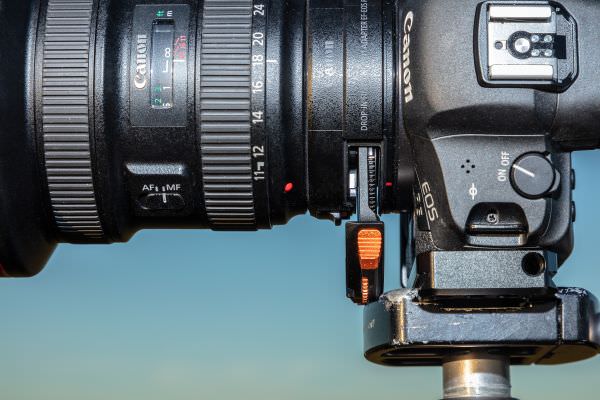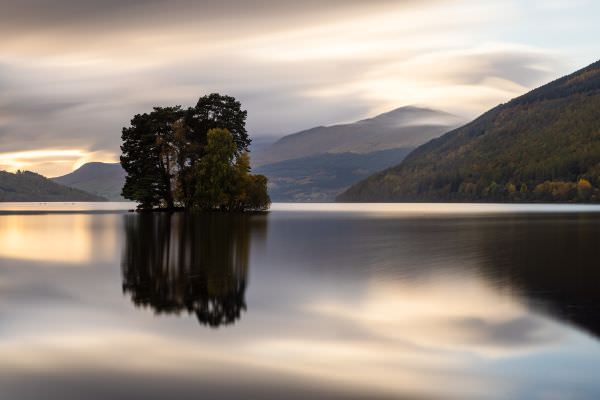
The Drop-In Filter Advantage
Last updated 3rd January 2023
In 2021 I finally made the decision to invest in a mirrorless camera in the form of a Canon EOS R5. My reasons for this may surprise you. I should start by pointing out that, unless my current camera bodies were about to die from over-use, any new camera would have to offer a significant advantage over my current set-up for me to consider upgrading. Currently I don't struggle with the weight of my kit, so that was certainly not one of my reasons. I was intrigued by the new focussing system with animal eye-tracking, but this function alone wasn't a reason to switch either. At the time of launch I didn't feel that the R5 alone did offer a significant advantage for the work that I do. When combined with the fact that I strongly disliked electronic viewfinders I decided not to upgrade straight away.
Later that year I noticed a feature of the R5 that did catch my eye. In order to use EF lenses with the R-series bodies it's necessary to use an EF-EOS R adapter. Canon offer three versions of this adapter, one of which incorporates a drop-in filter. Initially there were only three compatible filters available from Canon (clear, polariser and variable neutral density). These seemed to be of limited use, so it wasn't until I noticed that Breakthrough Filters had designed a whole range of compatible drop-in filters that it really got my attention.

I regularly use a polarising filter and various strengths of neutral density filter to help control exposure time in my landscape photographs. I don't use graduated filters, so these were all 82mm Heliopan glass screw-in filters (with a stepping ring to fit 77mm threads). These offer great image quality, but there is no denying they can be fiddly to put on and take off. It's easy to cross the threads or drop a filter. Stacking filters also results in vignetting when using very wide-angle lenses. It seemed to me that a drop-in filter system could eliminate most of these issues whilst also providing several other benefits.
For me perhaps the most significant advantage and the main reason for me investing in the R5 is that the ability to use these rear-mounted drop-in filters finally allows me to use neutral density filters with ultra-wide angle lenses like Canon's 11-24mm and 8-15mm fisheye. Previously the use of filters with these lenses had only been possible with either very fiddly or cumbersome solutions. There are also some options for using filters that clip into the body of the camera, but that means removing the lens every time you need to change filters, slowing you down and increasing the chance for moisture and dust to cause issues.

A filter of some sort has to be in the adapter all the time as it forms part of the optical pathway and is required for the focussing to work properly. Currently I'm using Canon's own clear filter and polariser. I tested Canon's variable neutral density filter, but it produced a strong blue colour cast, so I cannot recommend it. Breakthrough Photography kindly send me several pre-production samples of their drop-in filters to test. These work perfectly well in the Canon EF-EOS R adapter, although they also offer their own adapter. I have to say I've been extremely impressed by these filters. They are very well-designed, very sharp and very neutral in colour. They click into place very positively, but also with the lightest touch, so there's little chance of moving the camera when putting them in or taking them out.
I have never been a fan of variable neutral density (VND) filters. In theory they sound like a great idea, but due to the way they work I have never been confident in achieving an even effect across the frame. However, the drop-in VND from Breakthrough Photography is by far the best I have used to date. I think probably due to its smaller size any uneven effect seems much reduced. You still have to be careful exactly where to use it, as I have seen strange effects on a couple of occasions. As long as I avoid using it with clear blue skies and at certain angles to the sun on bright days, results are consistent enough for me to confidently make us of it. One of the great things about VND filters (when they work well!) is that you can use them to shoot a bracketed set of exposures without changing the camera settings - very useful if shooting long exposures with moving water, as each exposure will show a very similar effect in that moving water, allowing you to blend exposures seamlessly. This is a technique I have used frequently in the past, but it's certainly not easy when you have to screw traditional filters on and off the front of the lens!
The three images above were all taken using the same camera settings of 30 seconds at f11 at 100 ISO. The variable neutral density filter was turned to three different positions in order to obtain an exposure bracket that I could then blend in Adobe Lightroom to capture the full dynamic range of the scene. The final result can be seen below.

Drop-in filters have significantly speeded up my workflow in the field. They can be 'dropped-in' far more easily and quickly than screwing a traditional filter onto the front of the lens. I can now also use two filters without vignetting when using lenses as wide as 16mm (one drop in and one screw-on). Being much smaller and lighter than my 82mm Heliopan filters they have halved the size and weight of my (already pretty compact) filter kit. They are stored in a small pouch on my belt or in a jacket pocket, so they're always easily accessible.
The only issue I've found with using the drop-in filter adapter is that its design is really slot-in rather than drop-in, as the filter slot is on the side of the adapter. When shooting a vertical composition from my tripod using an L-bracket this means the filter cannot be inserted or removed from the adapter as the filter slot is obstructed by the top of my tripod head. Whether this is an issue for everyone will of course depend upon their particularly tripod set-up. The adapter is designed to allow easy adjustment of a polarising filter or VND when handholding the camera, especially for video use. Hopefully someone will come up with a revised adapter with the filter slot in the top at some point in the future!

So the ability to use drop in filters for landscape photography, and therefore begin using the excellent Canon 11-24mm lens, was my sole reason for buying the Canon EOS R5. It should be noted that the use of drop-in filters is not possible when using RF lenses. Currently this is only an option for those using EF lenses on R series mirrorless bodies via an adapter. Thankfully I'm perfectly happy with my EF lenses, so the fact that I'm now stuck with them is fine by me....especially as it has saved me many thousands of pounds upgrading to RF glass!


